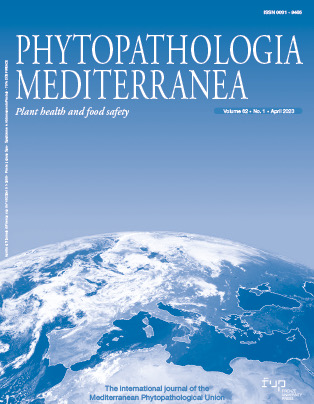Identification and characterization of fungi associated with leaf spot/blight and melting-out of turfgrass in Algeria
Published 2023-05-08
Keywords
- morphological characterizationmulti-gene phylogeny,
- Koch’s postulates,
- Bipolaris spp.,
- A. carbonarius
How to Cite
Copyright (c) 2023 Nabahat BESSADAT, Bruno HAMON, Nelly BATAILLÉ-SIMONEAU, Nisserine HAMINI-KADAR, Mabrouk KIHAL, Philippe SIMONEAU

This work is licensed under a Creative Commons Attribution 4.0 International License.
Abstract
Symptoms of foliar blight were observed on turfgrass in Oran (Algeria), including yellow chlorotic patches on leaves during the 2020 summer (temperatures between 35 and 40°C). Symptoms extended downward from leaf tips and entire leaves became blighted, leading to irregular discoloured areas that later turned brown. Isolations from infected plants included 214 isolates identified as Curvularia or Bipolaris, based on morphological traits. Other isolates included Fusarium, Myrothecium and Acremonium spp. Three molecular loci, ITS rDNA, gpd and tef1, were amplified and sequenced. Morphological and multi-locus phylogenetic analyses revealed four fungal species viz. B. sorokiniana, C. spicifera, C. verruculosa, C. geniculata, and two additional Curvularia lineages, some of these fungi are reported are first records for Algeria. Koch’s postulates were confirmed by inoculating potted turfgrass with spore suspensions of 16 isolates and re-isolating of the inoculated pathogens from symptomatic tissues. Bipolaris sorokiniana was the most virulent pathogen causing numerous foliar necrotic lesions similar to those observed in the field. Other isolates infected basal leaves only, and caused less severe symptoms. The results show that Curvularia species may be secondary pathogens infecting stressed plants, and that simultaneous occurrence of high temperatures and poor water quality have influenced disease progression. Correct identification of these pathogens is important for applying appropriate and timely disease management.






